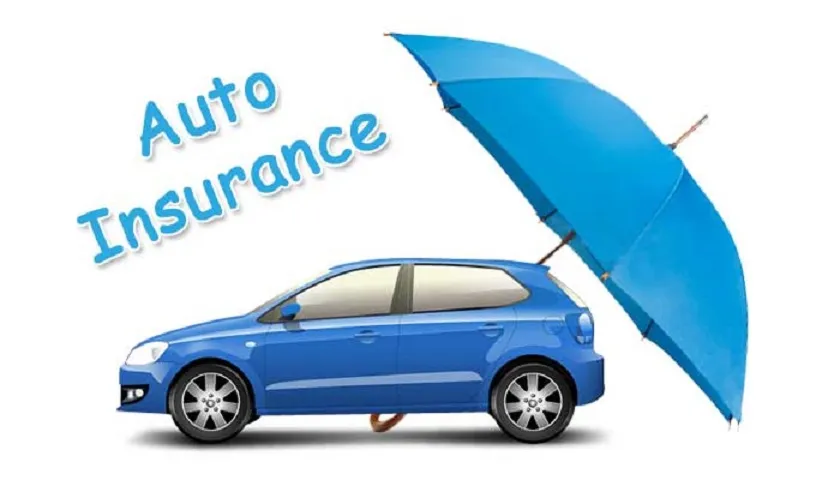Auto insurance is a crucial financial product that provides protection against financial losses due to accidents, theft, or other incidents involving your vehicle. Understanding how auto insurance works, the types of coverage available, factors affecting premiums, and tips for choosing the right policy can help you navigate this complex but essential aspect of vehicle ownership.
What is Auto Insurance?

Auto insurance is a contract between you and an insurance company where you pay a premium in exchange for coverage against specified risks related to your vehicle. In the event of an accident or damage, the insurance company compensates you as per the terms of the policy.
Types of Auto Insurance Coverage
- Liability Coverage: This is mandatory in most states and covers bodily injury and property damage that you may cause to others in an accident. It includes:
- Bodily Injury Liability: Covers medical expenses, lost wages, and legal fees if you injure someone in an accident.
- Property Damage Liability: Covers repair costs or replacement of property damaged in an accident, such as another vehicle or property like fences or buildings.
- Collision Coverage: This covers damage to your vehicle caused by colliding with another vehicle or object, regardless of fault.
- Comprehensive Coverage: Covers damage to your vehicle from incidents other than collisions, such as theft, vandalism, fire, or natural disasters.
- Uninsured/Underinsured Motorist Coverage: Protects you if you’re involved in an accident with a driver who has no insurance or insufficient coverage to pay for your damages.
- Medical Payments Coverage (MedPay): Covers medical expenses for you and your passengers regardless of fault in an accident.
- Personal Injury Protection (PIP): Similar to MedPay but often includes additional benefits such as lost wages and rehabilitation costs.
Factors Affecting Auto Insurance Premiums
Several factors influence how much you pay for auto insurance:
- Driving Record: A clean driving record typically results in lower premiums.
- Age and Gender: Younger drivers and males tend to pay higher premiums due to higher accident rates.
- Location: Rates can vary based on where you live and drive, including factors like crime rates and traffic congestion.
- Vehicle Type: The cost to repair or replace your vehicle, its safety features, and theft rates all affect premiums.
- Credit History: In some states, insurers consider your credit score when determining rates.
- Coverage and Deductibles: Higher coverage limits and lower deductibles lead to higher premiums.
- Annual Mileage: The more you drive, the higher the risk, which can increase premiums.
- Insurance History: Continuously insured drivers often receive lower rates.
Tips for Choosing the Right Auto Insurance Policy
- Assess Your Needs: Determine the coverage types and limits you need based on your vehicle, budget, and personal circumstances.
- Compare Quotes: Get quotes from multiple insurance companies to compare prices, coverage options, and customer reviews.
- Understand the Fine Print: Read the policy terms and conditions carefully to understand what is covered, exclusions, deductibles, and any limitations.
- Consider Discounts: Inquire about available discounts such as multi-policy, safe driver, good student, or low mileage discounts to lower your premium.
- Review Annually: Regularly review your policy to ensure it still meets your needs and to explore potential savings or changes in coverage.
- Customer Service and Claims Handling: Research the insurer’s reputation for customer service and claims handling to ensure reliability and responsiveness.
The Claims Process
Understanding the claims process is crucial in case you need to file a claim:
- Report the Incident: Contact your insurance company promptly to report the accident or damage.
- Provide Information: Be prepared to provide details such as your policy number, date and location of the incident, and any involved parties.
- Assessment: An adjuster may assess the damage to your vehicle and investigate the circumstances of the incident.
- Settlement: Once the claim is approved, the insurance company will provide compensation according to the terms of your policy.
Emerging Trends in Auto Insurance
The auto insurance industry is constantly evolving with technological advancements and changing consumer behaviors:
- Usage-Based Insurance (UBI): Policies based on actual driving habits using telematics devices or mobile apps.
- Pay-Per-Mile Insurance: Charges premiums based on the number of miles driven.
- Artificial Intelligence and Predictive Analytics: Used to assess risk more accurately and streamline claims processing.
- Digitalization: Enhancing customer experience through online policy management, claims filing, and communication.
Conclusion
Auto insurance is a critical aspect of responsible vehicle ownership, providing financial protection against unforeseen events. By understanding the types of coverage available, factors influencing premiums, and tips for selecting the right policy, you can make informed decisions that safeguard both your vehicle and your finances. Regularly reviewing your policy and staying informed about industry trends ensures you have the coverage you need at a competitive price.